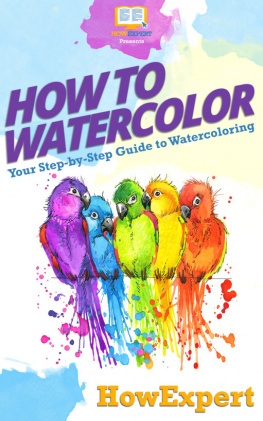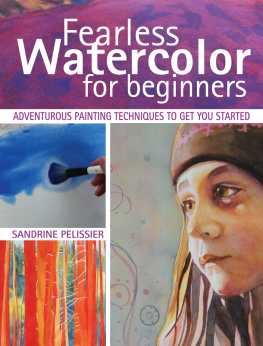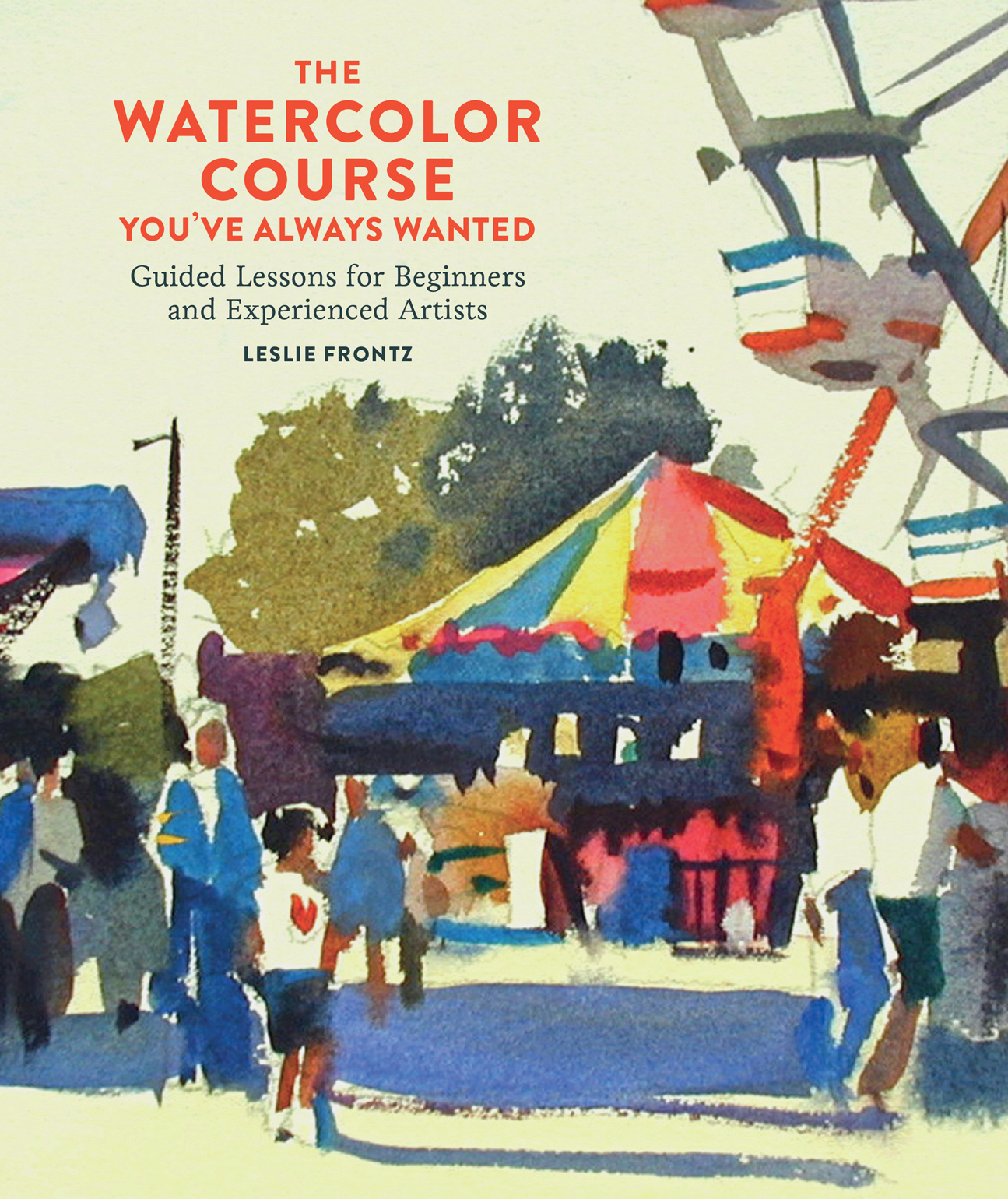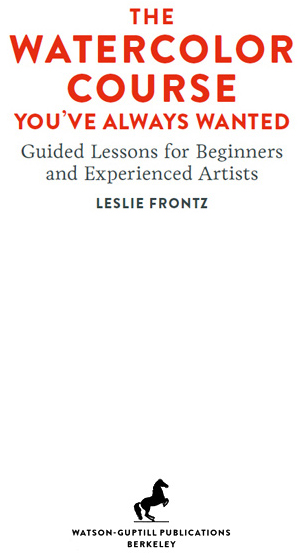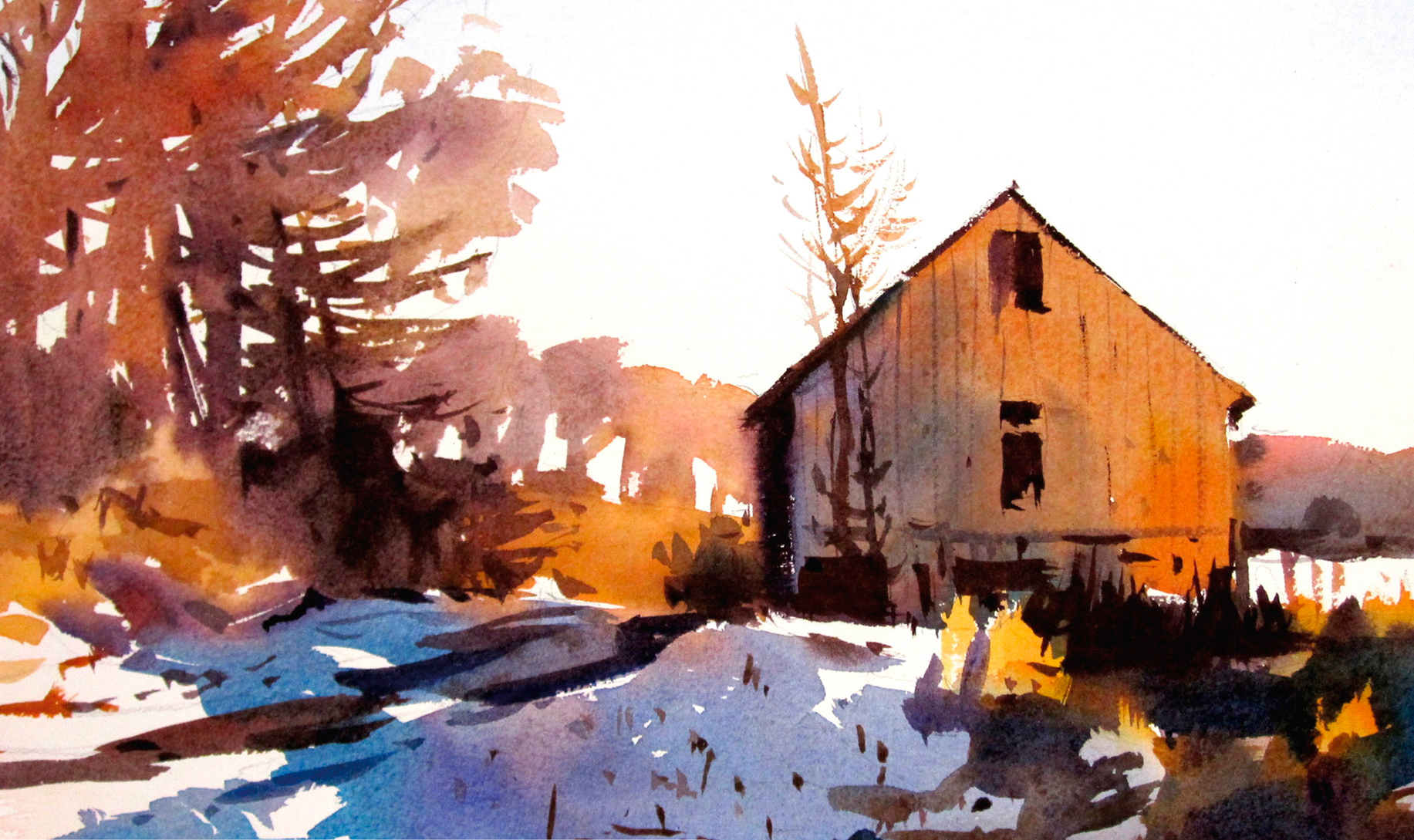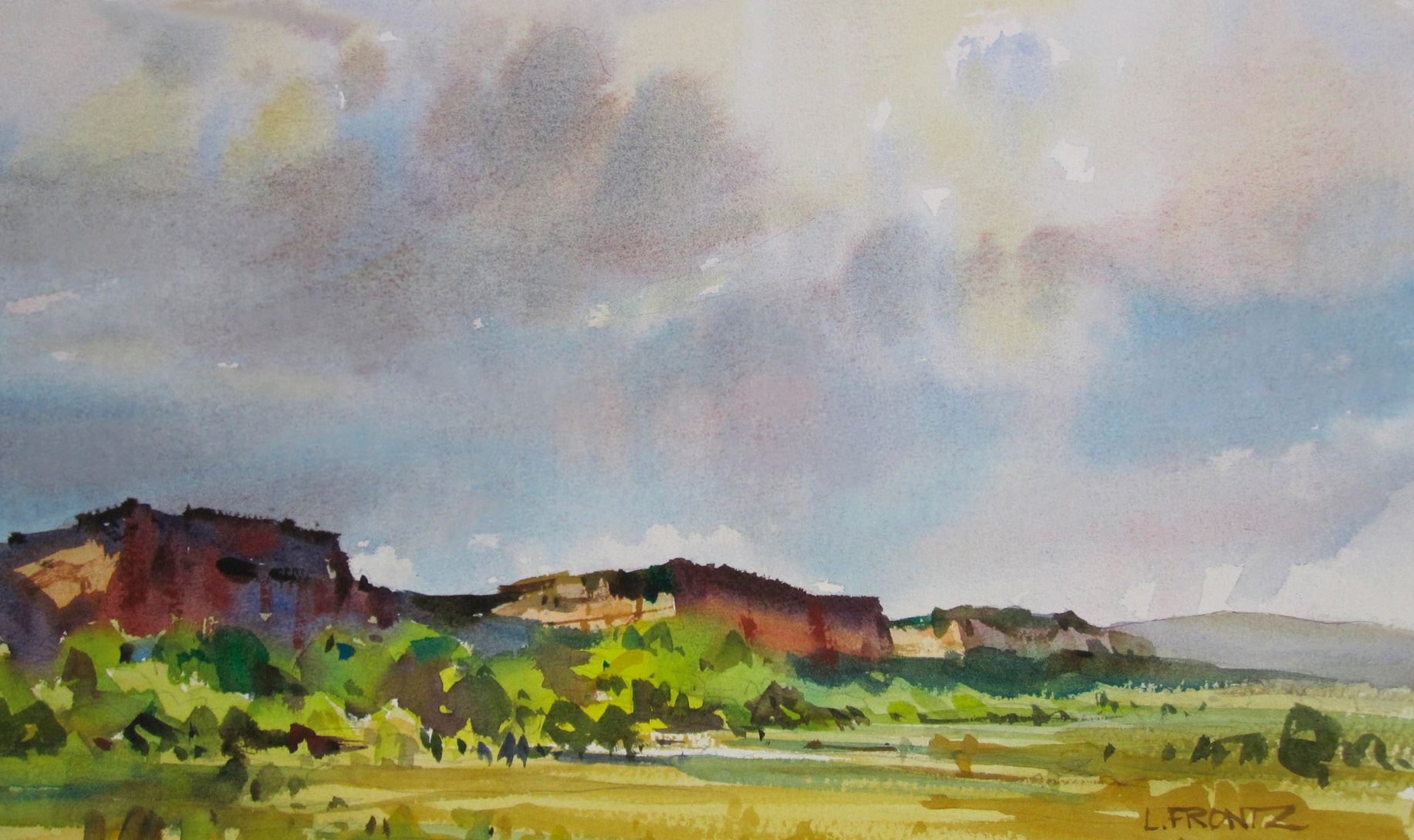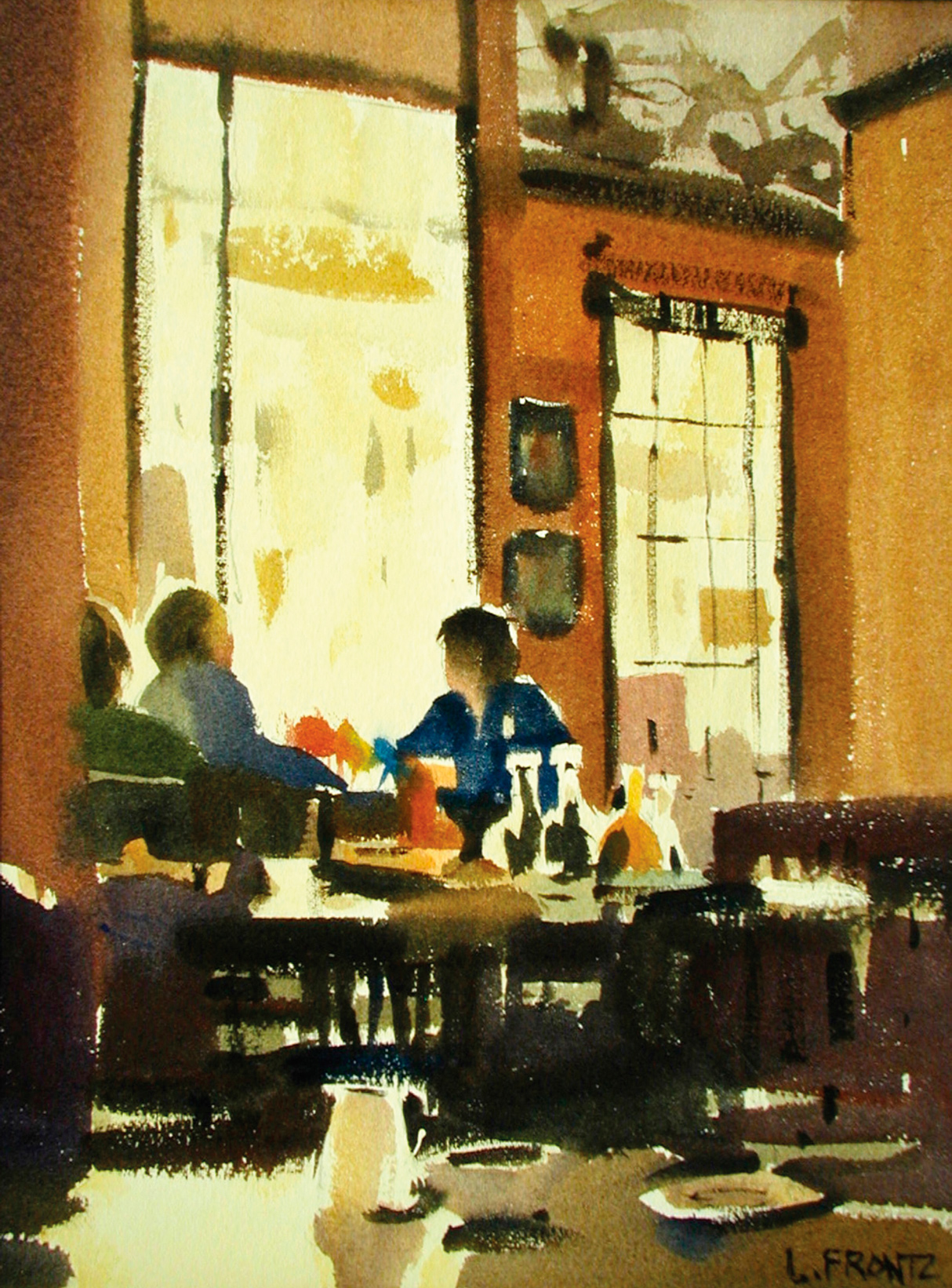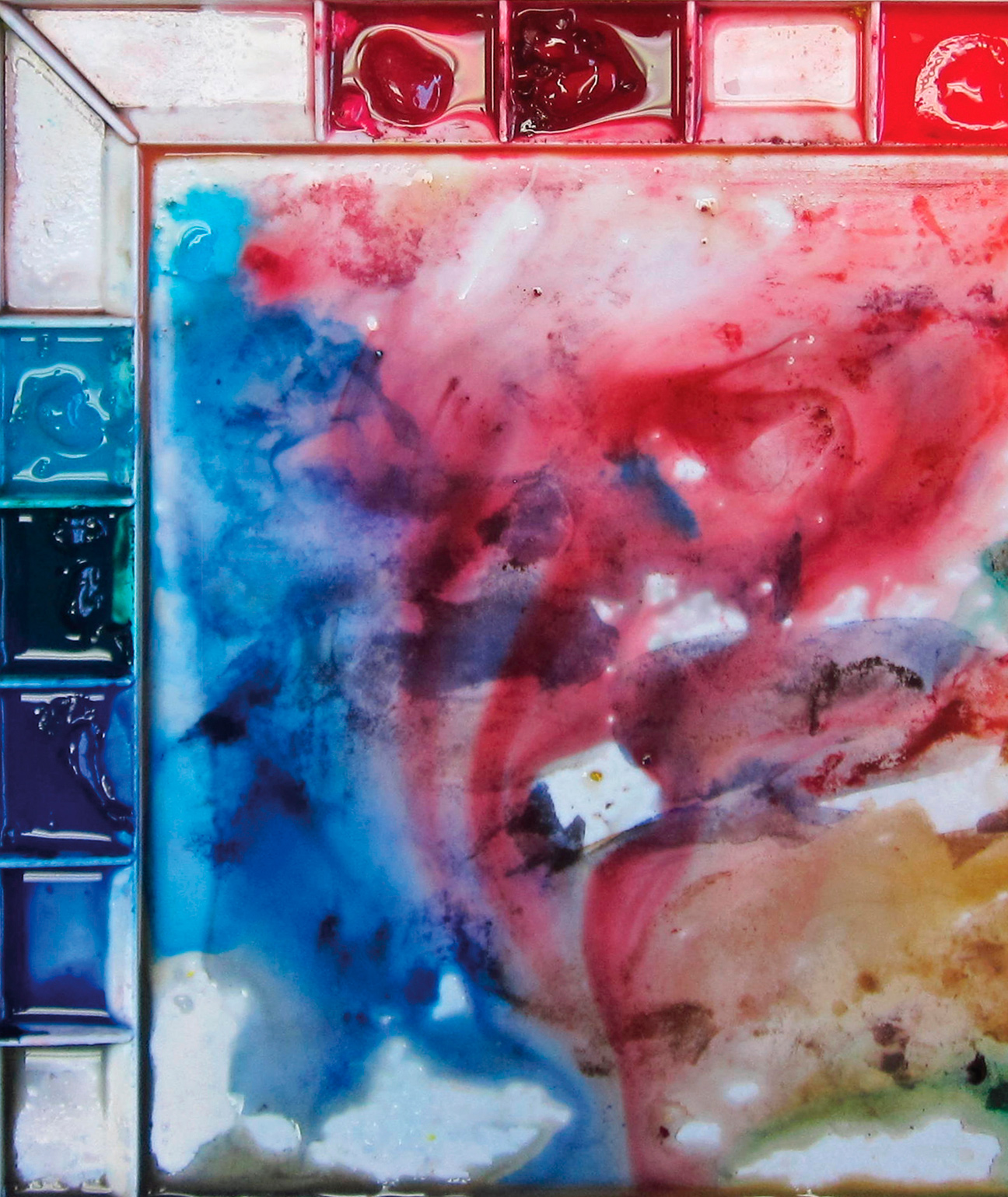Copyright 2015 by Leslie Frontz
All rights reserved. Published in the United States by Watson-Guptill Publications, an imprint of the Crown Publishing Group, a division of Penguin Random House LLC, New York.
www.crownpublishing.com
www.watsonguptill.com
WATSON-GUPTILL and the WG and Horse designs are registered trademarks of Penguin Random House LLC.
Library of Congress Cataloging-in-Publication Data
Frontz, Leslie.
The watercolor course youve always wanted : guided lessons for beginners and experienced artists / Leslie Frontz.First Edition.
pages cm
1. Watercolor paintingTechnique. I. Title.
ND2420.F76 2015
751.422dc23 2014048854
Trade Paperback ISBN9780770435295
eBook ISBN9780770435301
Design by Michelle Thompson | Fold & Gather Design
artwork Winifed Breines; photograph by Stewart Clements.
artwork Frank Webb; photograph by Frank Webb.
artwork Ron Lace; photograph by Ron Lace.
artwork Bernard Evans; photograph by Bernard Evans.
artwork Ross Paterson; photograph by Ross Paterson.
artwork Sandra Carpenter; photograph by Charles Carpenter.
artwork Charles Reid; photograph by Donald Sigovich.
artwork Don Weller; photograph by Don Weller.
artwork Toshiko Ukon; photograph by Yasuo Imai.
artwork Jeff Good; photograph by Andrew Adkison.
artwork Paul Tooley; photograph by Paul Tooley.
artwork Tim Hacker; photograph by Tim Hacker.
artwork Harold Frontz; photograph by Harold Frontz.
artwork Jim McFarlane; photographs by Jim McFarlane.
artwork Roger Parent; photograph by Roger Parent.
artwork Jean H. Grastorf; photograph by Zebra Color.
artwork Judi Betts; photograph by Lane Downs.
artwork Dean Mitchell; photograph by George Cott.
artwork Wilmer Anderson; photograph by Wilmer Anderson.
artwork Joyce Cavanagh-Wood; photograph by Joyce Cavanagh-Wood.
artwork Linda Doll; photograph by Linda Doll.
artwork David Poxon; photograph by David Poxon.
artwork Liese Sadler; photograph by Liese Sadler.
artwork Ray Balkwill; photograph by John Melville.
artwork Ted Vander Roest; photograph by Ted Vander Roest.
artwork Bill Vrscak; photograph by Bill Vrscak.
photograph Stacey Hunt.
v3.1
a
TO HAROLD, MY LORENZO
Contents
Leslie Frontz, Tte--Tte , 11" 8", watercolor on paper.
Introduction
This course is the result of years of teaching art: in colleges, public school, and now in workshops. My students ranged in age from five to seventy-five, and many had a sound introduction to art. Over the years, I saw that they had learned what to do, but not why or when. Often, they had simply acquired a set of rules, and they struggled to put theory into practice. This book goes beyond the rules.
Watercolor promises so much: glowing color and bold brushwork, strong shapes, and expressive lines. Because the medium is transparent, the progress of every stroke of paint is detectable, making the artists journey visible. Looking at a fine watercolor is an inspiring experience, but painting one is even better.
Watercolors transparency and fluidity have earned it an undeserved reputation as a fickle medium. All forms of painting take practice. What makes watercolor different is that working with sheer layers of color encourages innovation and vision: the ability to develop a personal notion about a subject and express it. Watercolor prompts us to become artists as well as painters.
The Watercolor Course Youve Always Wanted is a workshop in a book. Like my workshops, this book guides everyoneabsolute beginners as well as seasoned artistsbeyond the basics. The course offers a solid foundation in the mechanics, but it also helps you make the most of your subjects and ideas. If your hopes include turning out accomplished watercolors on a consistent basis, this book will help you get there. It teaches the skills needed to follow through on your own creative impulses: how to make the choices that will work best for you .
The key to the course is that it encourages you to think like an artist. A series of guided lessons covers a progression of topics: from seeing the potential in a subject to developing a personal style. Putting the workshop in book form allows you to set your own pace, go back to review, and even repeat a section as necessary. The sequence is carefully orchestrated, though the order in which information is presented may be surprising. It is an exhilarating way to learn, but forewarned is forearmed: skipping chapters is a risky business.
The point is to expand your horizons. The chapters include step-by-step demonstrations as well as the work of students and other fellow artists. If you are a landscape painter, do not hesitate to try a still life or portrait. The lessons are pertinent to all subject matter; they simply provide a way to learn by doing. Personal tips also speed your progress. The demonstrations have been field-tested, and they are all within reach. Most of what you will learn is common sense. My students would agree. So this is all there is to it? The explanation makes everything so much clearer. I didnt believe I could do this! These are the typical reactions from students, and the reason for this book. All I can add is, Happy painting!
Chapter 1
CHOOSING AND USING
MATERIALS
W atercolor paintings have a definite appeal, and so do the materials we use to make them. We covet the latest brushes, pigments, and papers, but there are more supplies available than one artist could master in a lifetime.
In many ways, this is an advantage. No two artists paint exactly the same way. We approach the painting process differently, and our styles are unique. Obviously, the materials we need will vary. Experimenting with various products encourages us to find new ways to use the medium.


